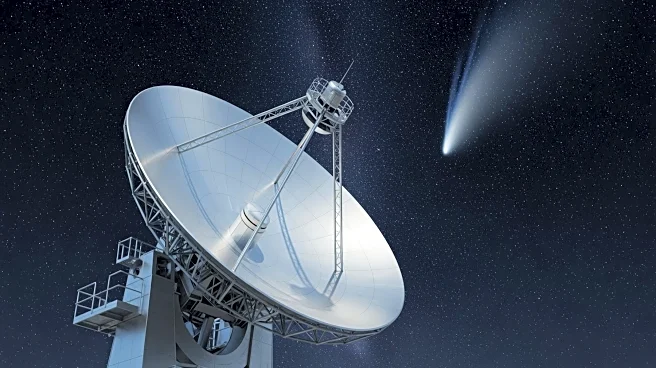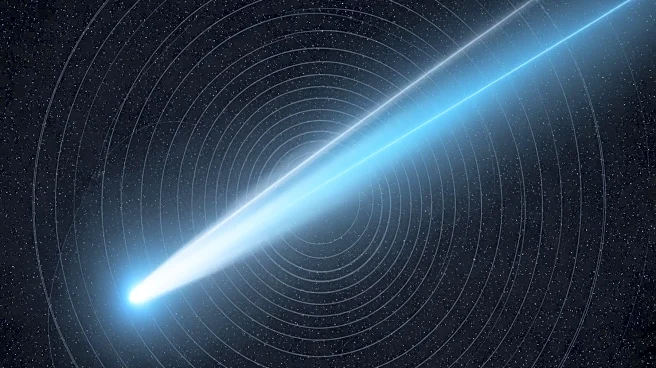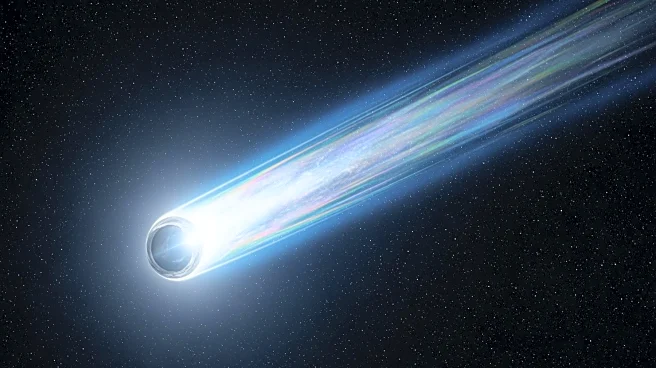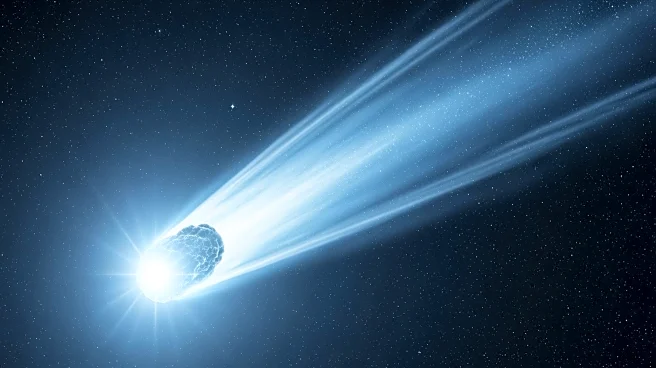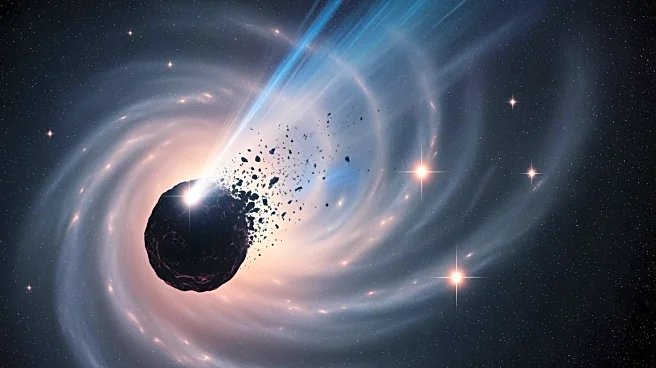What's Happening?
The interstellar comet 3I/ATLAS has been observed to develop a tail and a coma as it approached the sun, exhibiting typical cometary behavior. Despite claims by Harvard scientist Avi Loeb suggesting it could
be artificial due to its structural integrity and unusual tail direction, there is no evidence to support these claims. The comet did not disintegrate during its close approach to the sun, contrary to predictions of disintegration. Observations revealed that the comet's tail was pointing in a strange direction, known as an anti-tail, which pointed toward the sun rather than away from it. This phenomenon occurs when sunlight nudges dust particles back out behind the comet. The comet's origins remain unclear, with some astronomers suspecting it came from a cluster of stars perhaps eight billion years in age.
Why It's Important?
The study of interstellar comets like 3I/ATLAS is crucial for understanding the composition and behavior of celestial bodies that originate outside our solar system. These observations provide insights into the materials and processes that occur in distant planetary systems. The presence of metals such as nickel and iron in the comet's coma suggests complex chemical processes that could inform our understanding of cometary formation and evolution. Additionally, the comet's unusual tail behavior challenges existing models of cometary dynamics, prompting further research into the forces and conditions that influence cometary tails.




